- Formiculture.com
- Forums
- Gallery
- Members
- Member Map
- Chat

105 replies to this topic
#61
 Offline
-
Posted June 17 2019 - 12:54 PM
Offline
-
Posted June 17 2019 - 12:54 PM
1st queen is Camponotus nearcticus, or Camponotus caryae. Second might be Nylanderia.
My Main Journal | My Neivamyrmex Journal | My Ant Adoption | My YouTube
Join the TennesseeAnts Discord Server! https://discord.gg/JbKwPgs
#62
 Offline
-
Posted June 17 2019 - 2:23 PM
Offline
-
Posted June 17 2019 - 2:23 PM
Camponotus nearcticus/caryae (would need closer pictures of the sides of the head), and Brachymyrmex patagonicus for the small queen, due to the back of her head being sharply concave and the length of her gaster. B. obscurior is closest but is a tropical species that has apparently no dense populations outside of Florida and no reports from NC.
- TennesseeAnts likes this
#63
 Offline
-
Posted June 27 2019 - 7:59 PM
Offline
-
Posted June 27 2019 - 7:59 PM
Sorry haven't had much time to take any photos. Most of these queens seemed to be virgins still so I have released them. I kept the ones who had laid eggs.
Good news is I've caught more ants and have taken some better photos.
I caught this queen at the door at work when I closed. She's very tiny at 5mm. As soon as I got her in the test tube with water she shed her wings and laid that egg.
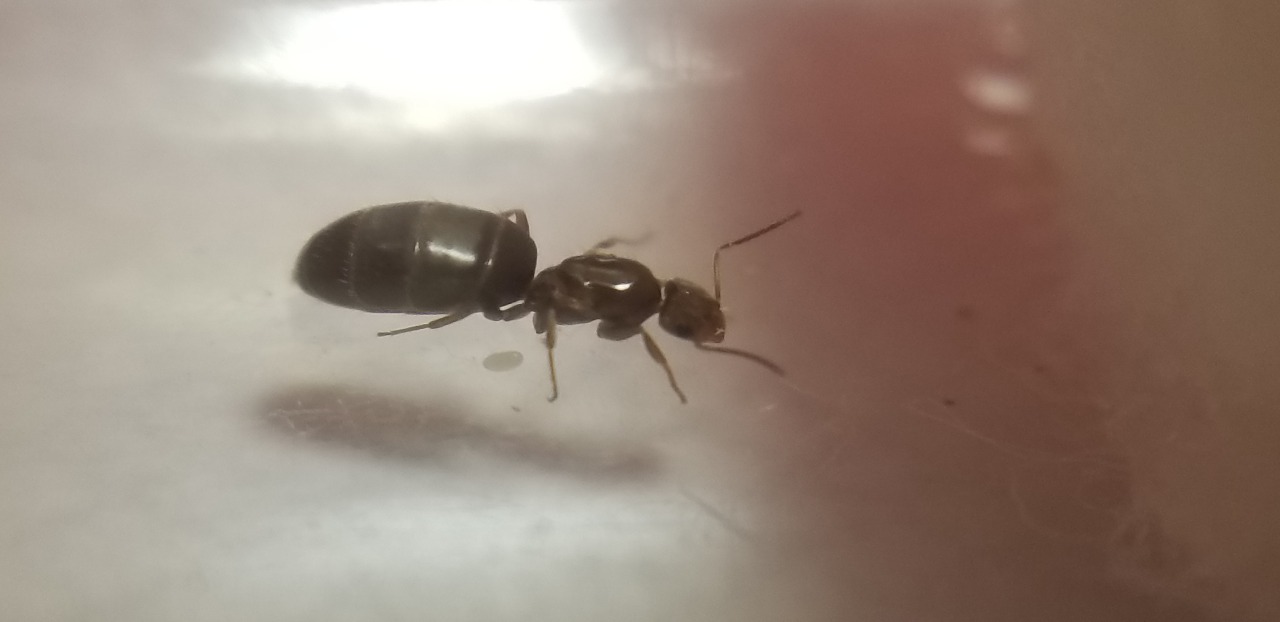

#64
 Offline
-
Posted June 28 2019 - 4:20 AM
Offline
-
Posted June 28 2019 - 4:20 AM
Looks like either Brachymyrmex or Nylanderia.
- Thatfa666ene likes this
My Main Journal | My Neivamyrmex Journal | My Ant Adoption | My YouTube
Join the TennesseeAnts Discord Server! https://discord.gg/JbKwPgs
#65
 Offline
-
Posted June 28 2019 - 5:19 AM
Offline
-
Posted June 28 2019 - 5:19 AM
I’d say B. patagonicus or B. obscurior. I’m leaning toward the former.
- Thatfa666ene likes this
Spoiler
#66
 Offline
-
Posted June 28 2019 - 6:43 AM
Offline
-
Posted June 28 2019 - 6:43 AM
There's another one in the same test tube who has not shed her wings or laid any eggs. Will they get along? I need to get a microscope.
#67
 Offline
-
Posted July 7 2019 - 1:27 PM
Offline
-
Posted July 7 2019 - 1:27 PM
So I caught this a little while back not sure exactly when. Just noticing now that she's unlike all my other queens. About 7mm.
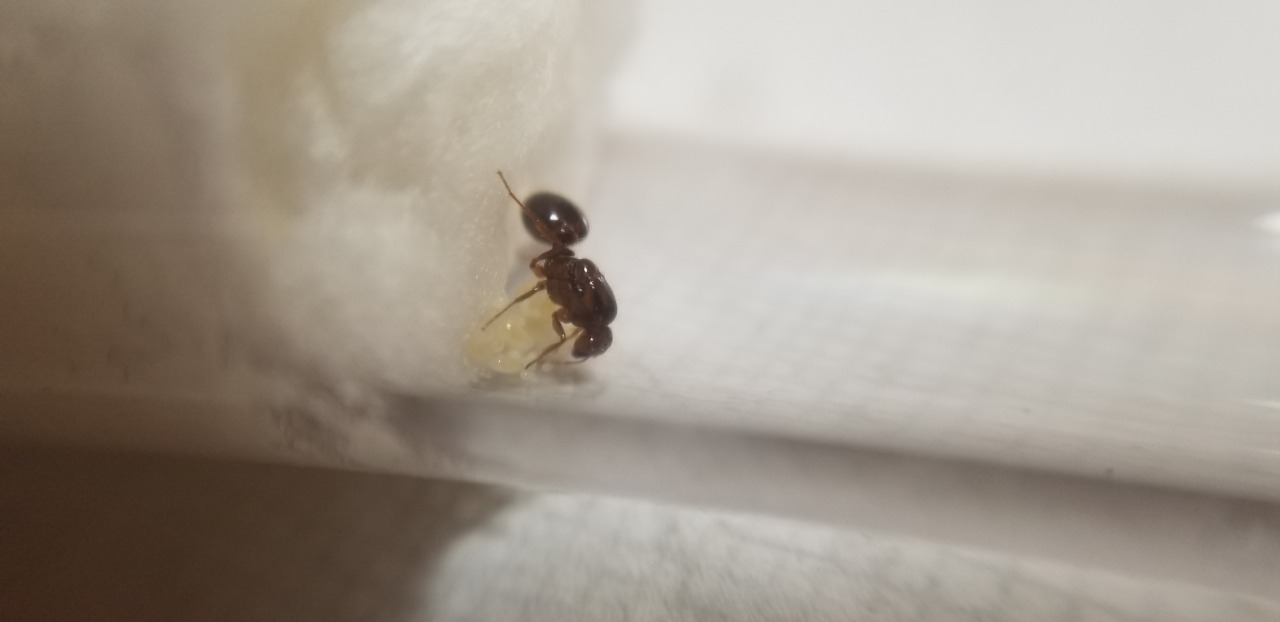
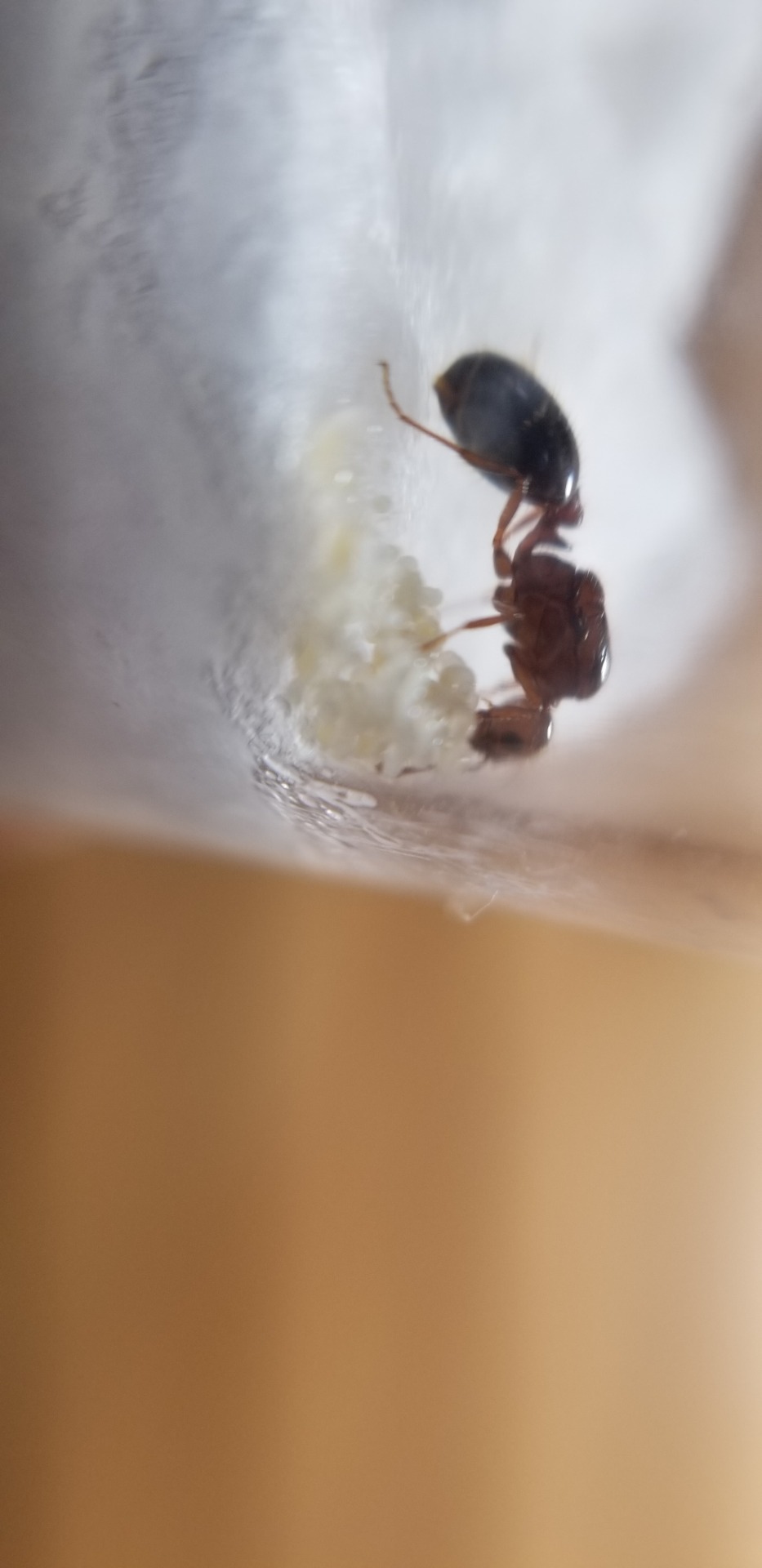


#68
 Offline
-
Posted July 7 2019 - 3:31 PM
Offline
-
Posted July 7 2019 - 3:31 PM
Probably Solenopsis invicta x richeri.
My Main Journal | My Neivamyrmex Journal | My Ant Adoption | My YouTube
Join the TennesseeAnts Discord Server! https://discord.gg/JbKwPgs
#69
 Offline
-
Posted July 8 2019 - 2:35 PM
Offline
-
Posted July 8 2019 - 2:35 PM
Probably Solenopsis invicta x richeri.
I need to retake some photos of those ants I caught a couple months ago that were identified as solenopsis Invicta cause they are very different in size. Like double the size.
#70
 Offline
-
Posted July 8 2019 - 3:16 PM
Offline
-
Posted July 8 2019 - 3:16 PM
Looks like a species of Lasius, a social parasite species. It was likely near the Camponotus colony during diapause. Based on the shape of the antennae, and how pilose she is, she may be L. claviger.
Possibly L. interjectus?
"God made..... all the creatures that move along the ground according to their kinds (including ants). And God saw that it was good. Genesis 1:25 NIV version
Keeping:
Formica cf. pallidefulva, cf. incerta, cf. argentea
Formica cf. aserva, cf. subintegra
Myrmica sp.
Lasius neoniger, brevicornis
#71
 Offline
-
Posted July 8 2019 - 5:00 PM
Offline
-
Posted July 8 2019 - 5:00 PM
Looks like a species of Lasius, a social parasite species. It was likely near the Camponotus colony during diapause. Based on the shape of the antennae, and how pilose she is, she may be L. claviger.
Possibly L. interjectus?
Lasius claviger.
Ant Keeping & Ethology Discord - 2000+ Members and growing
Statesideants.com - order live ants legally in the US
#72
 Offline
-
Posted July 14 2019 - 10:53 AM
Offline
-
Posted July 14 2019 - 10:53 AM
Found these on a trip to Emerald Isle this week. Caught at night under some lights at a beach house. First one is 1 cm.
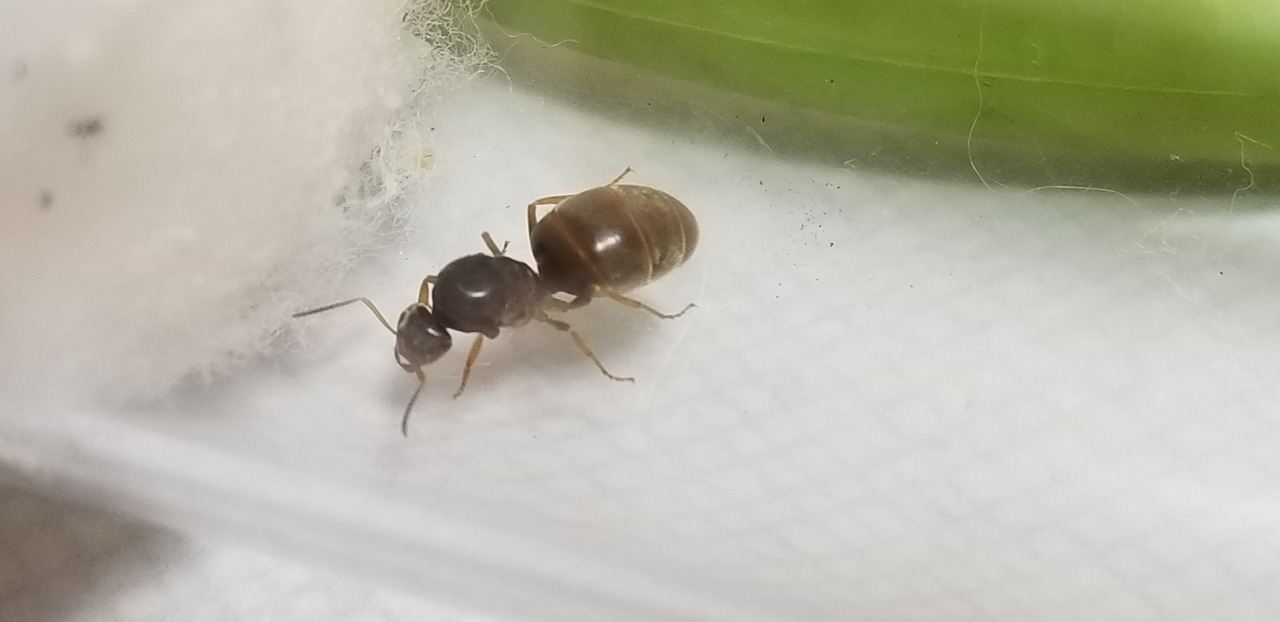
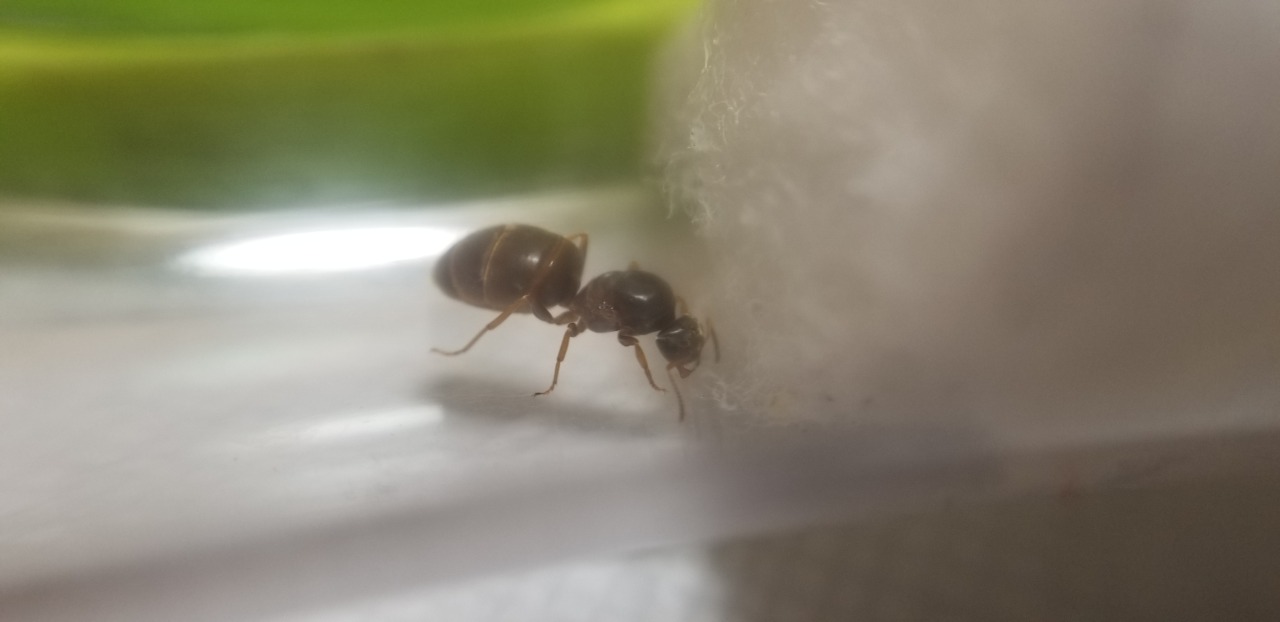
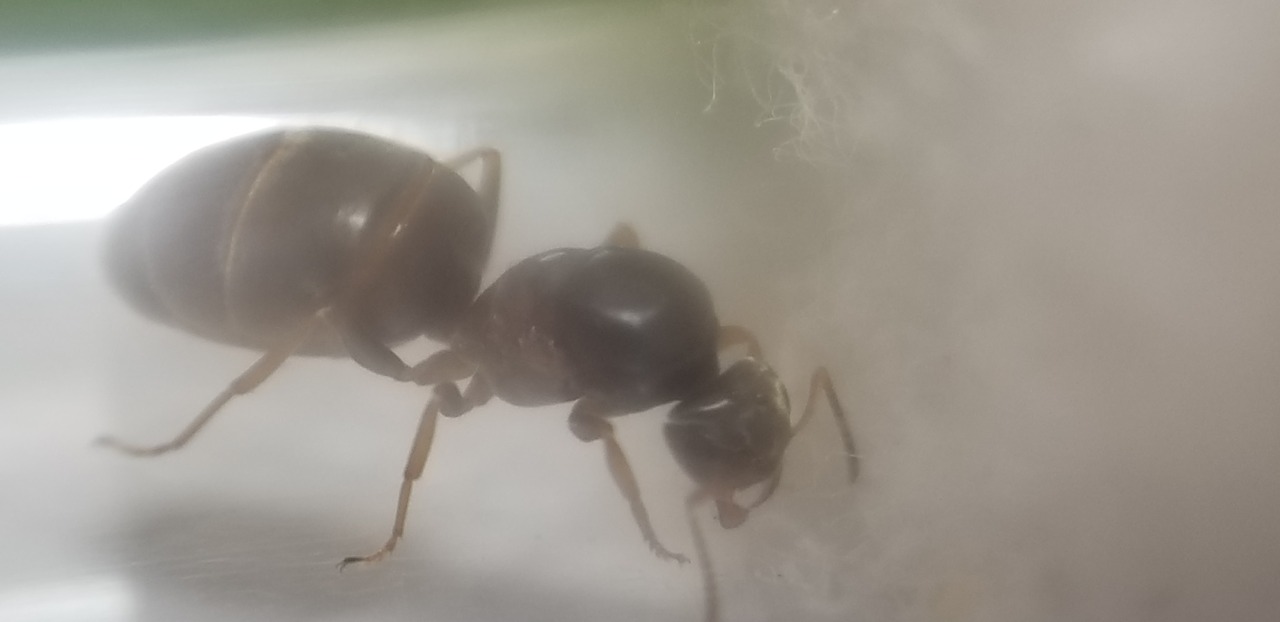
This one is 7mm.

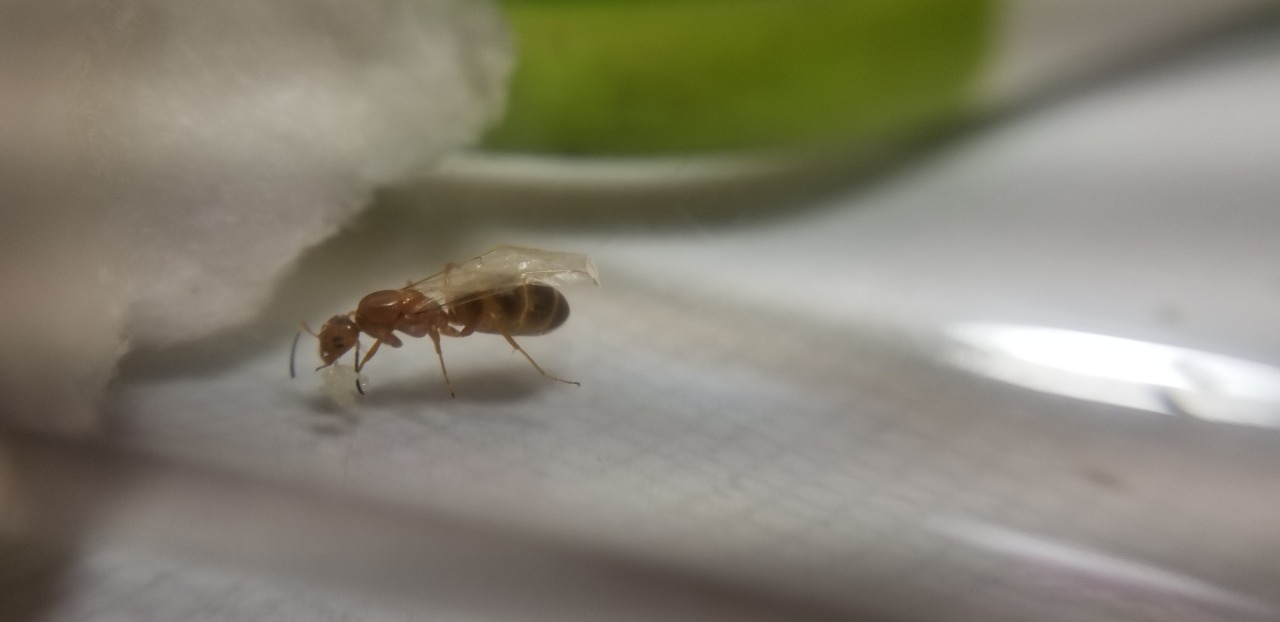
#73
 Offline
-
Posted July 14 2019 - 10:56 AM
Offline
-
Posted July 14 2019 - 10:56 AM
Lasius americanus and Forlieus sp.
My Main Journal | My Neivamyrmex Journal | My Ant Adoption | My YouTube
Join the TennesseeAnts Discord Server! https://discord.gg/JbKwPgs
#74
 Offline
-
Posted July 14 2019 - 11:59 AM
Offline
-
Posted July 14 2019 - 11:59 AM
The 7mm length and ovular head of the second queen points to Dorymyrmex bureni for me. First queen is certainly a Lasius, though.
- TennesseeAnts likes this
#75
 Offline
-
Posted July 17 2019 - 7:59 AM
Offline
-
Posted July 17 2019 - 7:59 AM
Some of these queens have got their first couple rounds of workers. This first queen was identified as Solenopsis Invicta. Workers are maybe 4mm.
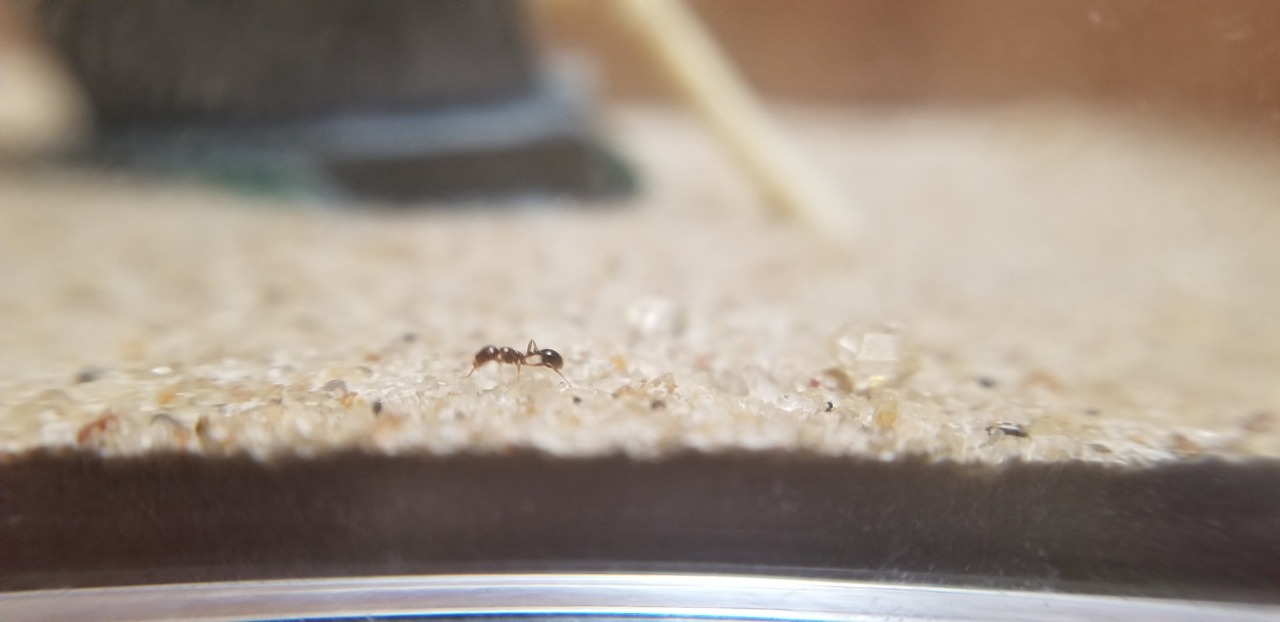

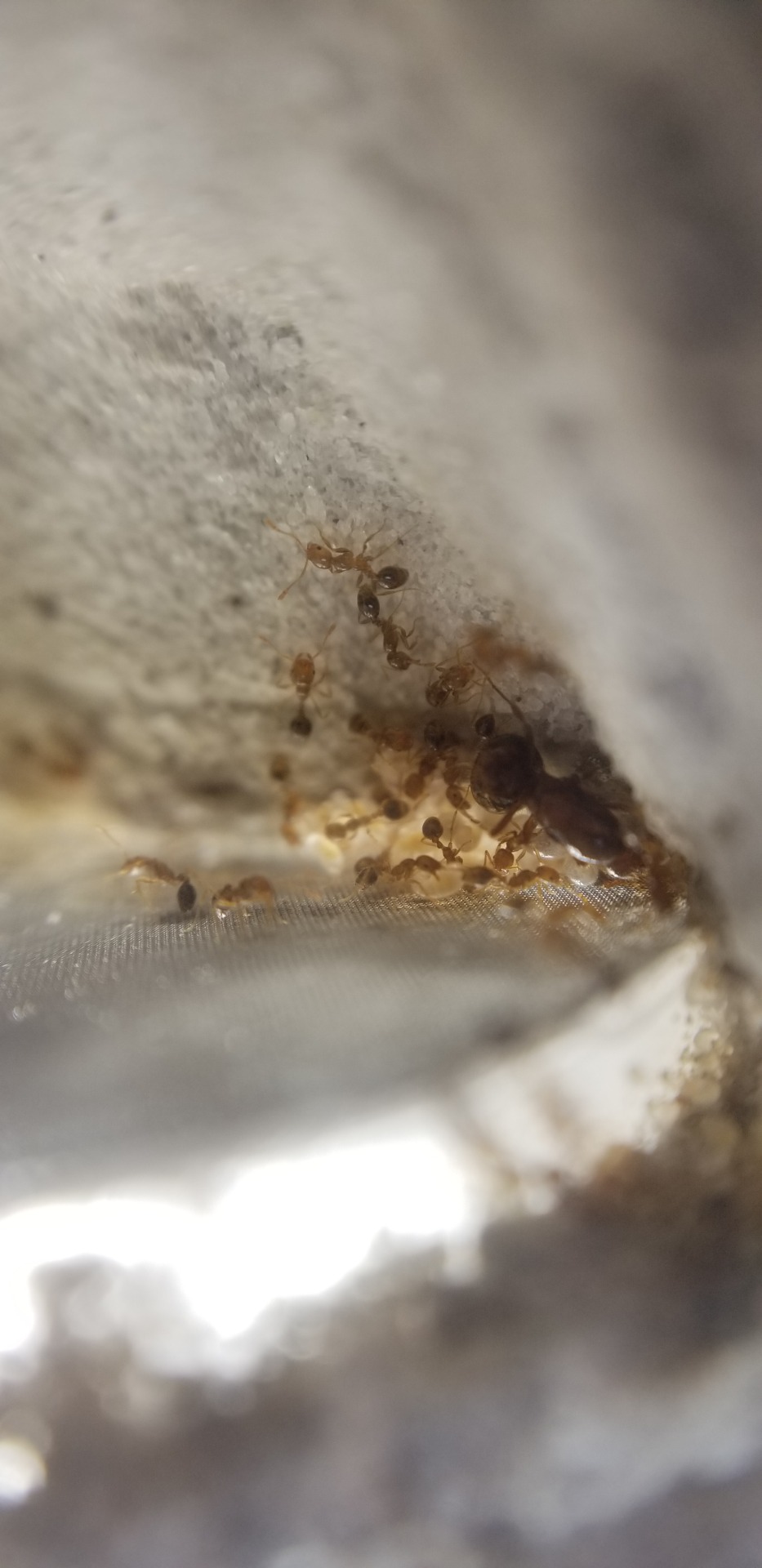
I can't really remember if I uploaded pics of this queen to be identified. Workers are like 2 mm, and the queen is 6mm.
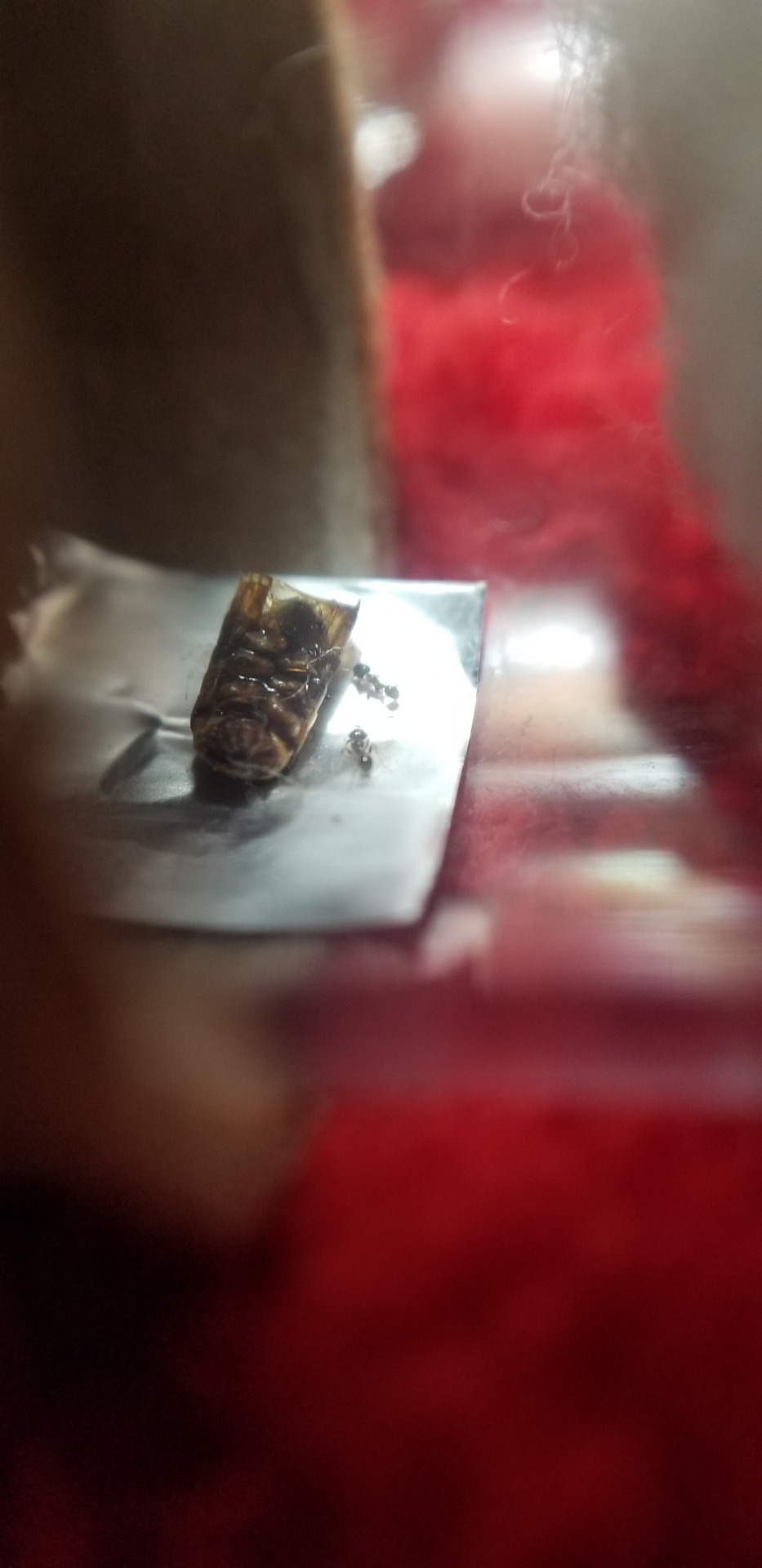
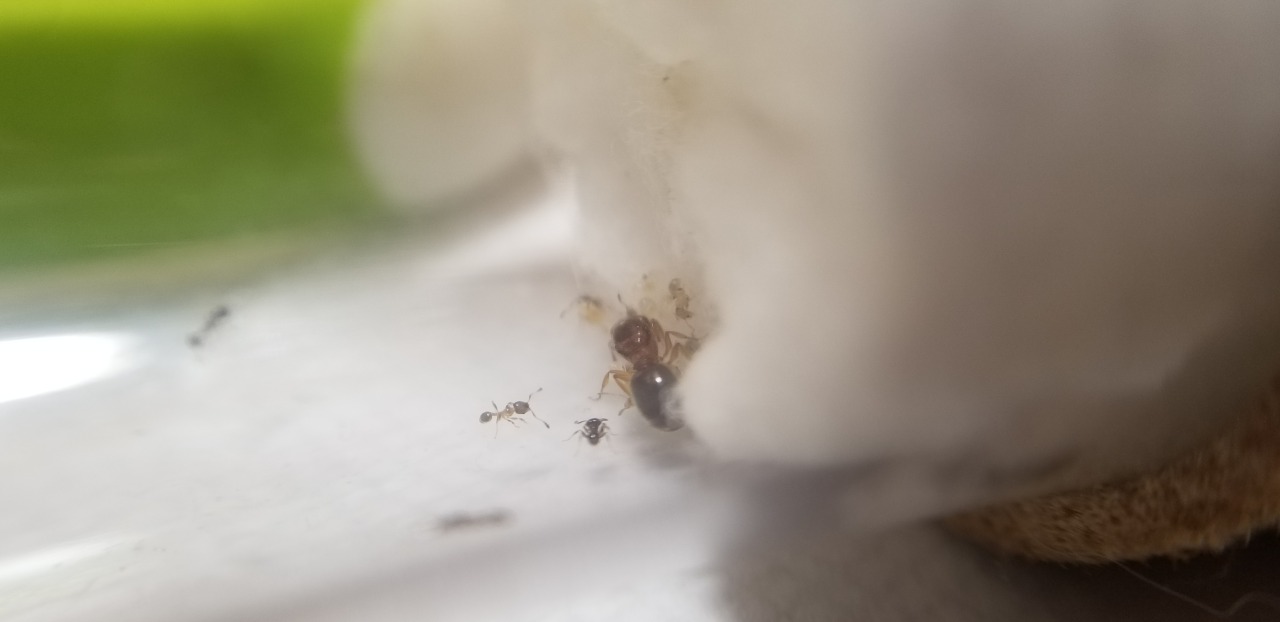
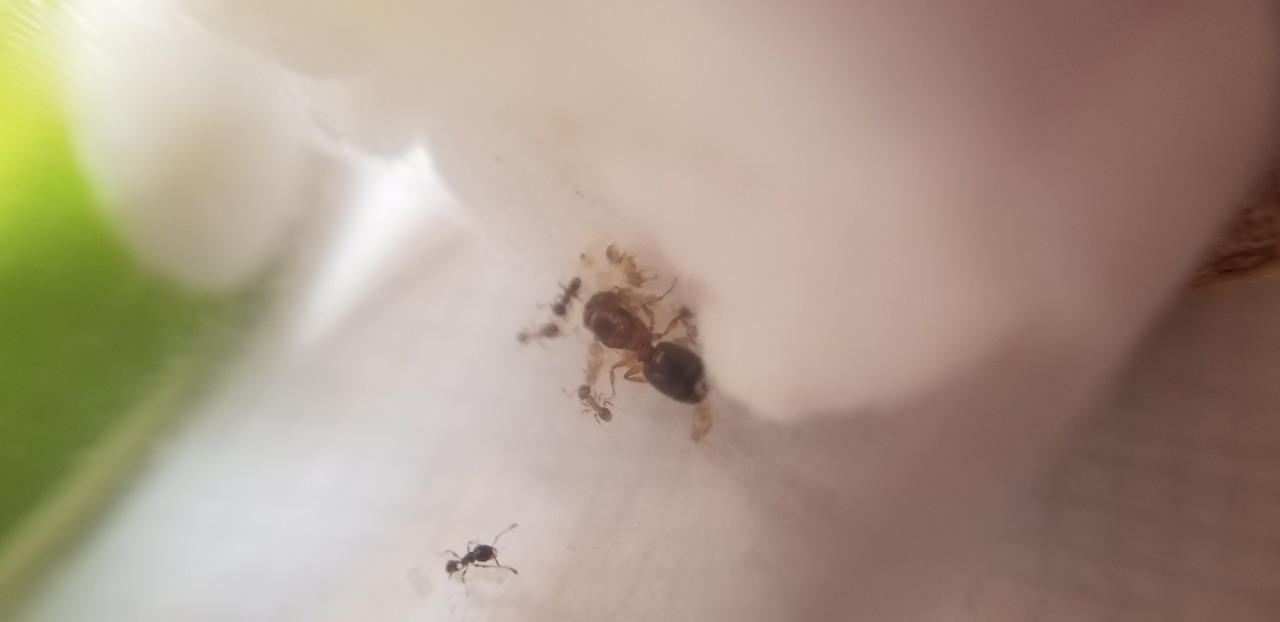
#76
 Offline
-
Posted July 17 2019 - 8:06 AM
Offline
-
Posted July 17 2019 - 8:06 AM
Second queen is Pheidole bicarinata.
- Thatfa666ene likes this
My Main Journal | My Neivamyrmex Journal | My Ant Adoption | My YouTube
Join the TennesseeAnts Discord Server! https://discord.gg/JbKwPgs
#77
 Offline
-
Posted July 17 2019 - 8:14 AM
Offline
-
Posted July 17 2019 - 8:14 AM
Second queen is Pheidole bicarinata.
Sweet. I've had Pheidole on my capture list.
- TennesseeAnts likes this
#78
 Offline
-
Posted July 19 2019 - 12:28 PM
Offline
-
Posted July 19 2019 - 12:28 PM
So caught this on the light attractor this morning. About 5mm
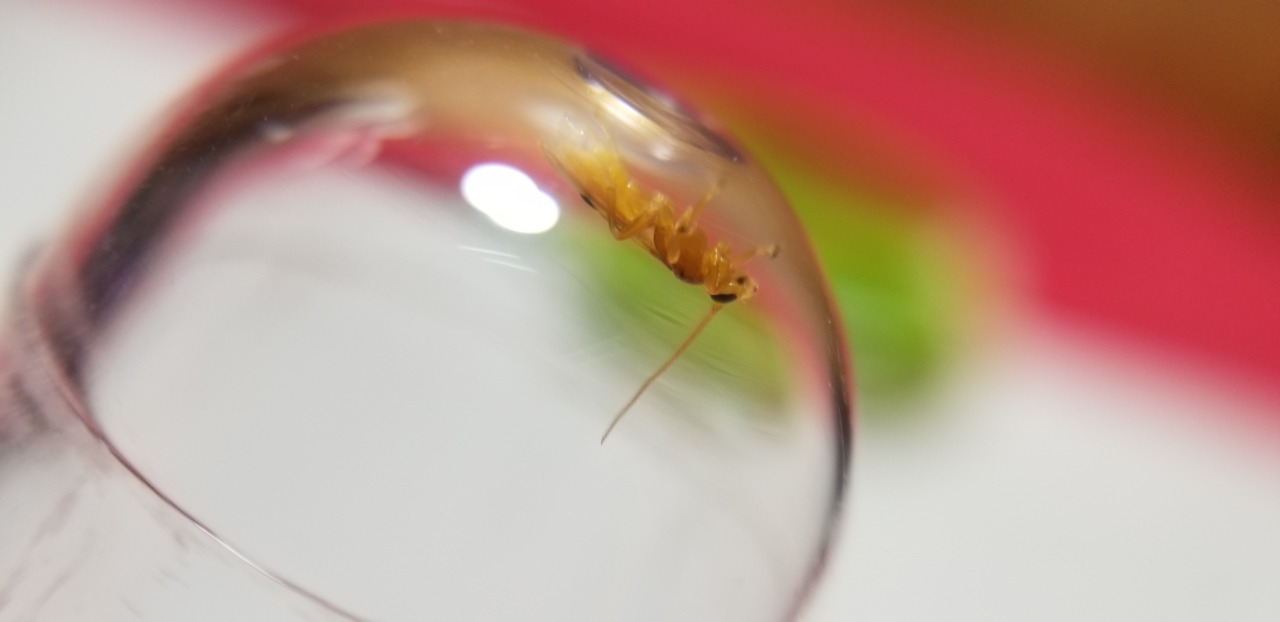
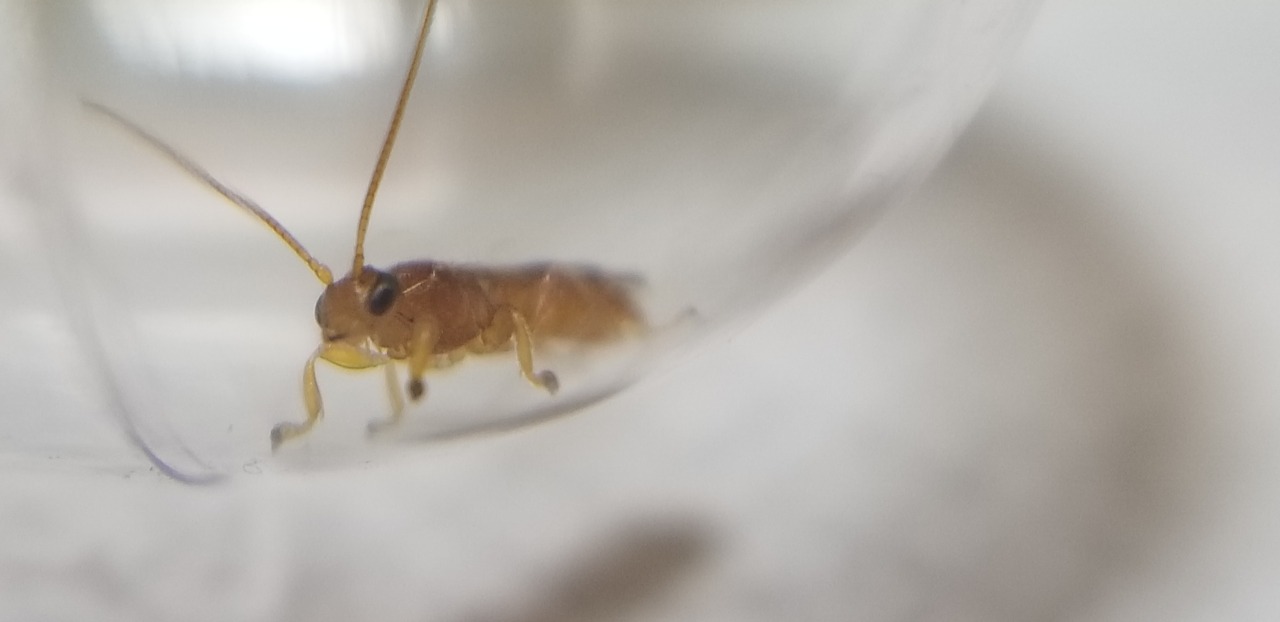

Also I've had this queen for a while now, and she finally laid a couple of eggs. To my eye they looked awfully reddish brown and wasn't sure if that's normal. She's 1.5cm
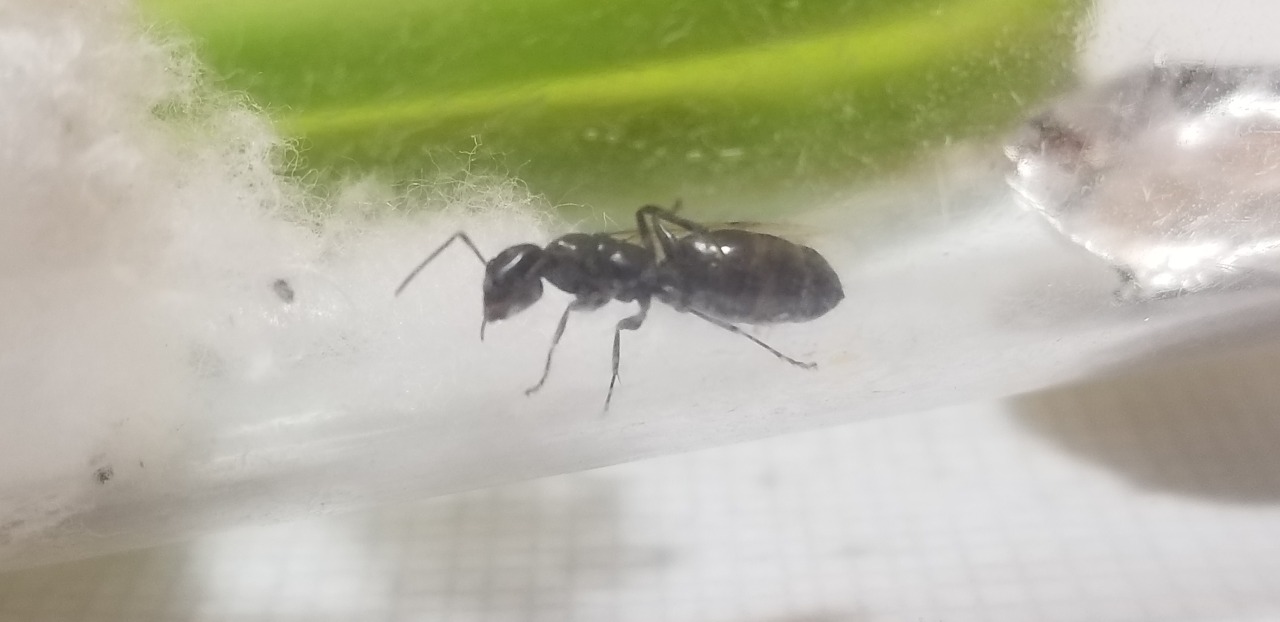
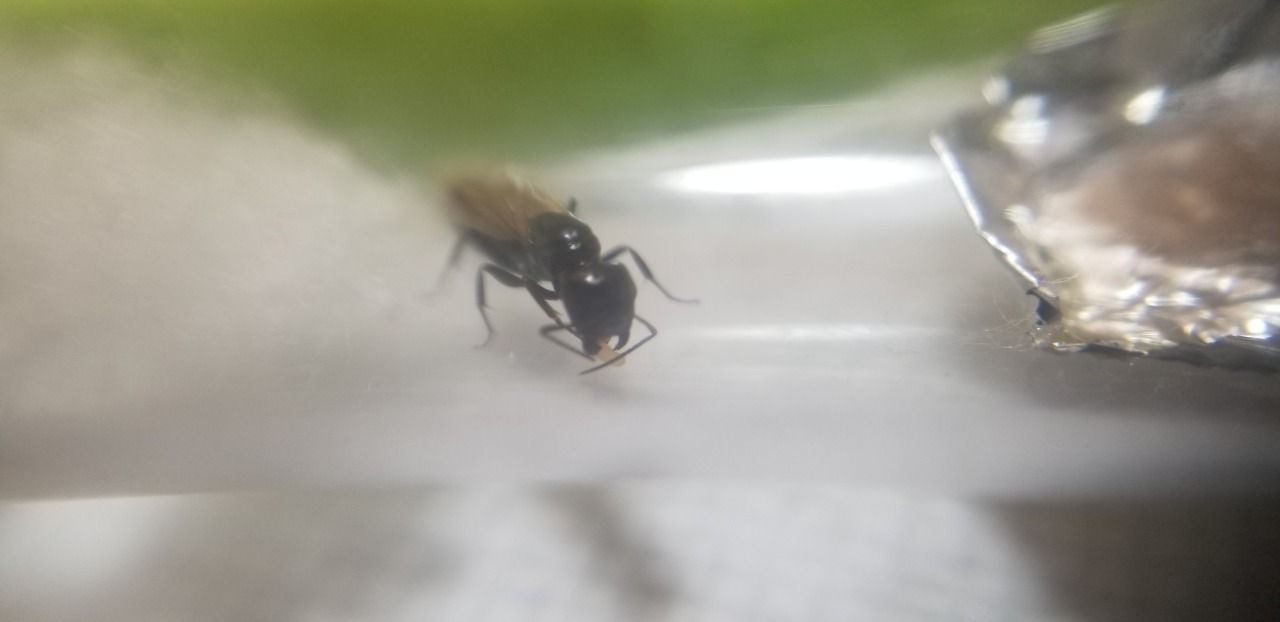




Also I've had this queen for a while now, and she finally laid a couple of eggs. To my eye they looked awfully reddish brown and wasn't sure if that's normal. She's 1.5cm



#79
 Offline
-
Posted July 19 2019 - 5:06 PM
Offline
-
Posted July 19 2019 - 5:06 PM
Brachyponera chinensis male and Camponotus nearcticus queen.
- Thatfa666ene likes this
My Main Journal | My Neivamyrmex Journal | My Ant Adoption | My YouTube
Join the TennesseeAnts Discord Server! https://discord.gg/JbKwPgs
#80
 Offline
-
Posted July 21 2019 - 3:37 PM
Offline
-
Posted July 21 2019 - 3:37 PM
Uh, I think the first one is a wasp. It looks nothing like a B. chinensis male. Also, the antennae are not those of an ant.
Hi there! I went on a 6 month or so hiatus, in part due, and in part cause of the death of my colonies.
However, I went back to the Sierras, and restarted my collection, which is now as follows:
Aphaenogaster uinta, Camponotus vicinus, Camponotus modoc, Formica cf. aserva, Formica cf. micropthalma, Formica cf. manni, Formica subpolita, Formica cf. subaenescens, Lasius americanus, Manica invidia, Pogonomyrmex salinus, Pogonomyrmex sp. 1, Solenopsis validiuscula, & Solenopsis sp. 3 (new Sierra variant).
Also tagged with one or more of these keywords: id requests
Scituate, Massachusetts, USA 6/29/2021Started by Ottercl , Jun 29 2021 |
|

|
||
Anting →
Ant ID Requests →
Can you define it?Started by huseyinhasret , Apr 23 2020 |
|

|
1 user(s) are reading this topic
0 members, 1 guests, 0 anonymous users




















